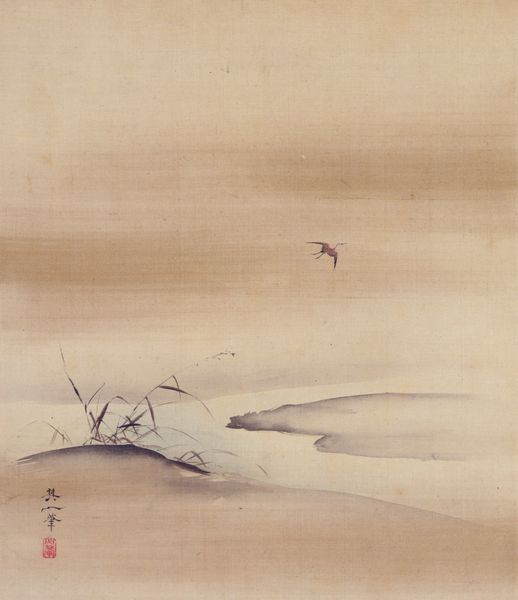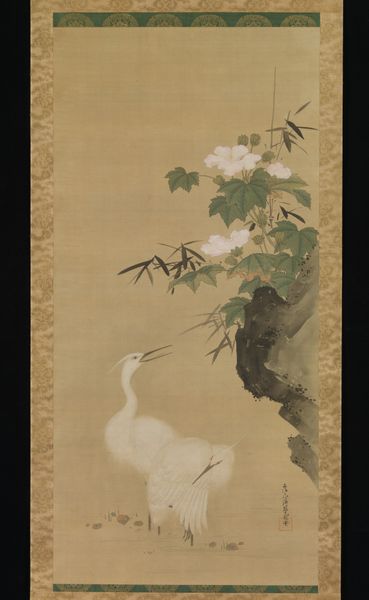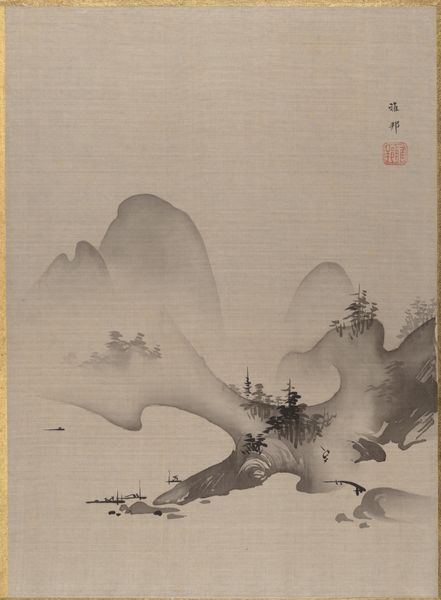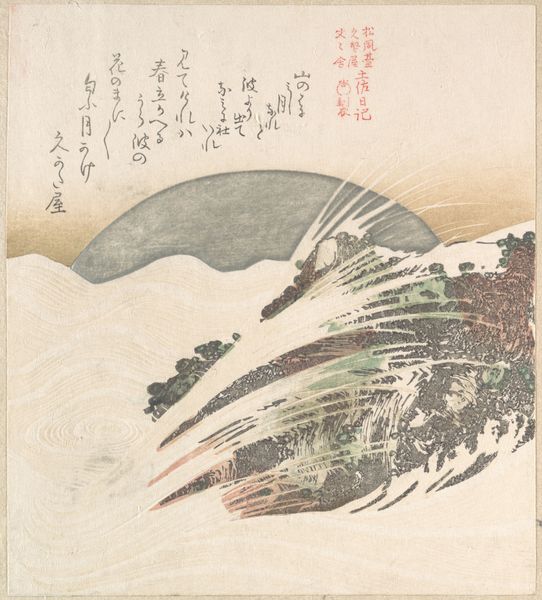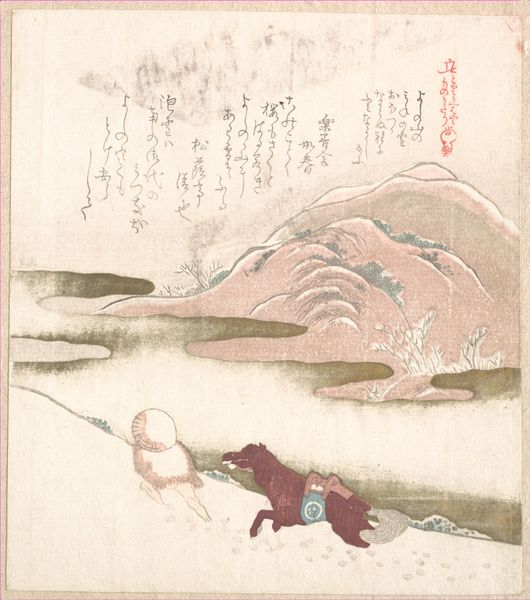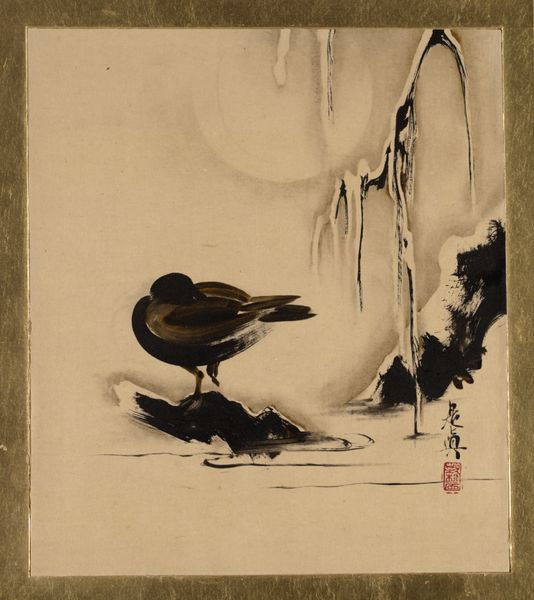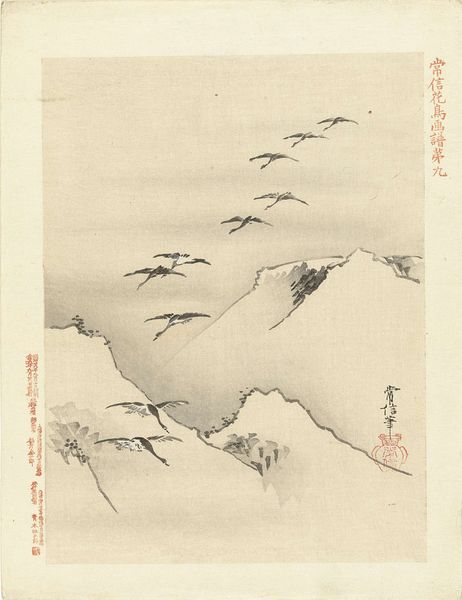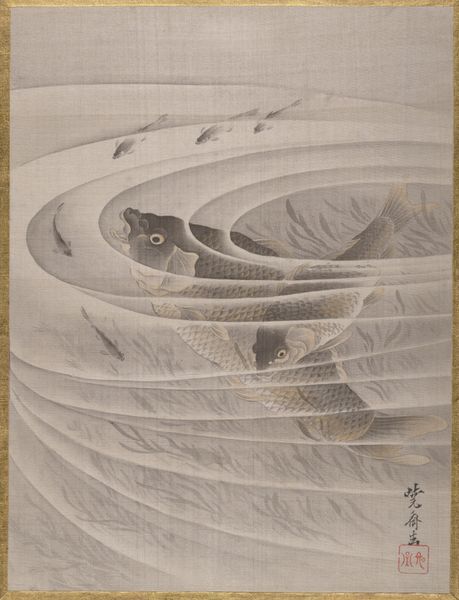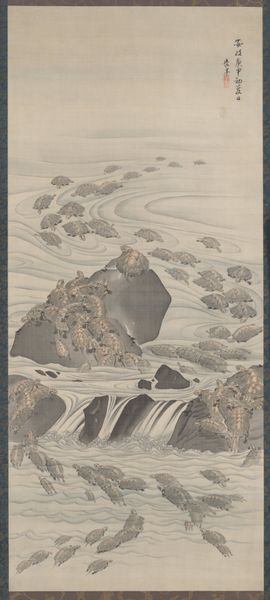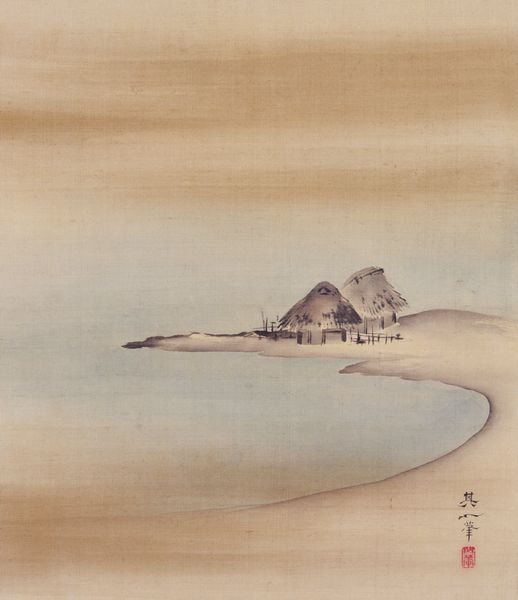
color-on-silk, watercolor, hanging-scroll, ink
#
color-on-silk
#
asian-art
#
landscape
#
ukiyo-e
#
japan
#
figuration
#
watercolor
#
hanging-scroll
#
ink
#
line
#
watercolour illustration
#
watercolor
Dimensions: 48 9/16 × 19 1/2 in. (123.35 × 49.53 cm) (image)74 15/16 × 20 13/16 in. (190.34 × 52.86 cm) (mount, without roller)
Copyright: Public Domain
Editor: This hanging scroll, called "Plovers," is by Suzuki Kiitsu, from around the 19th century. It's watercolor and ink on silk. I find it so peaceful, with its muted colors and delicate brushstrokes. What can you tell me about it? Curator: "Plovers" offers us a fascinating window into the world of 19th-century Japanese art and its intersection with social and cultural values. Consider the format: a hanging scroll. Where might such an artwork have been displayed, and what kind of person would have commissioned or purchased it? Editor: Probably someone wealthy, right? In their home, maybe? Curator: Precisely. And in what context would they have viewed it? These weren't public artworks in the way we think of them today. Consider the symbolism as well: birds, particularly migratory ones, often represent themes of travel, change, and the seasons in Japanese art. This painting emerges from a cultural moment intensely focused on national identity, while also absorbing outside influences. Do you think this artist chose these avian symbols by chance, or was it a calculated commentary of the human condition? Editor: Hmm, I hadn’t thought about it that way. Maybe it was both. What do you mean by "commentary of the human condition?" Curator: This piece, exhibited within the private sphere, engages in a very public act: it is participating in creating identity. Consider the ukiyo-e tradition, how everyday life gets portrayed. In this case the focus shifts from humans, placing a focus on our interaction with nature and asking its viewers to find a reflection. Editor: That’s interesting. So it's not just a pretty landscape; it's connected to bigger cultural conversations? Curator: Absolutely. Understanding the artwork requires us to look beyond just the aesthetic qualities and understand the web of historical, social, and even political meanings circulating within it. The institutional framework of art - galleries, patronage systems, public image – really do shape the significance of work such as “Plovers.” Editor: Wow, I'll definitely see this with fresh eyes now! Curator: And that's the joy of art history; it constantly gives us new angles to reflect on ourselves!
Comments
No comments
Be the first to comment and join the conversation on the ultimate creative platform.

